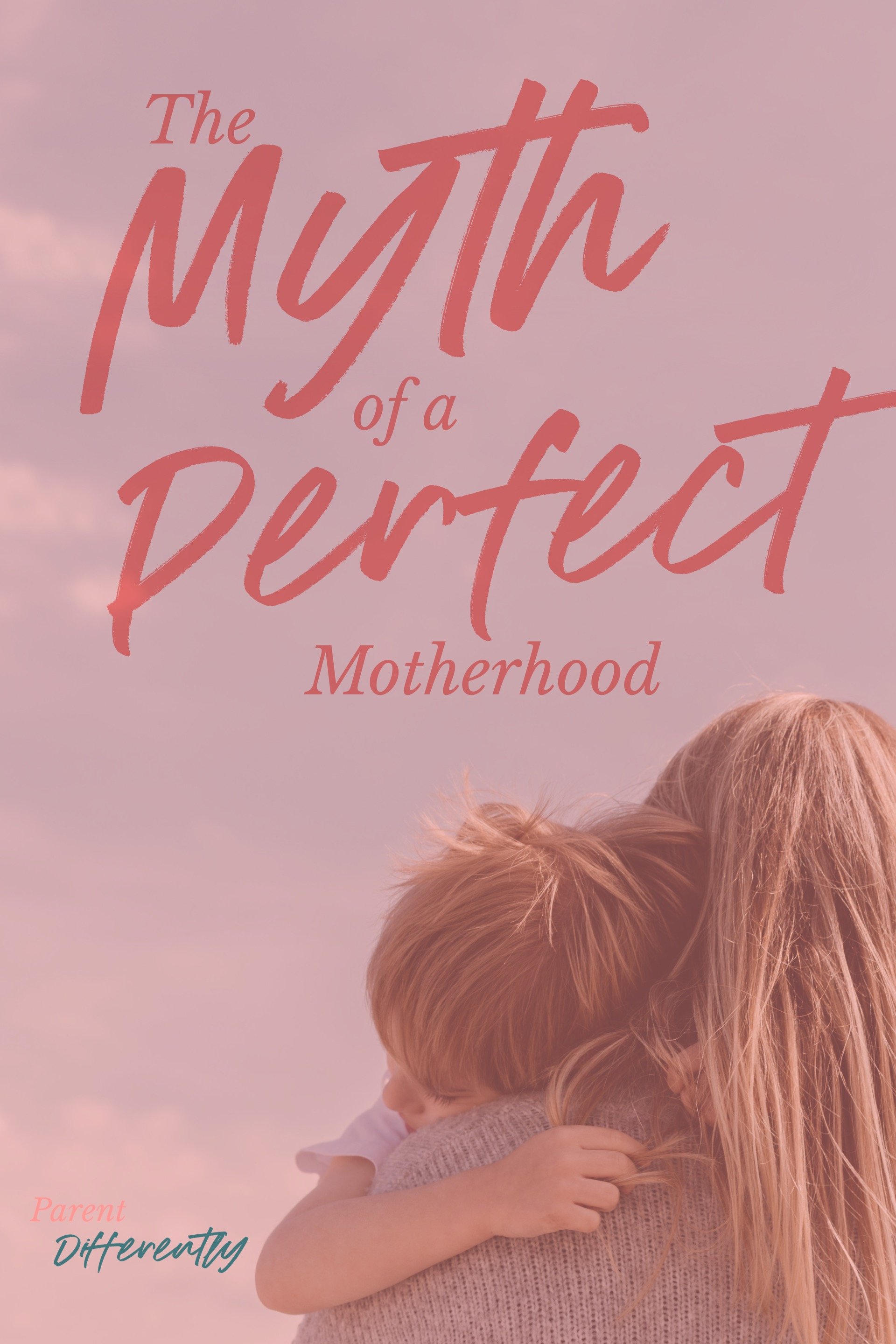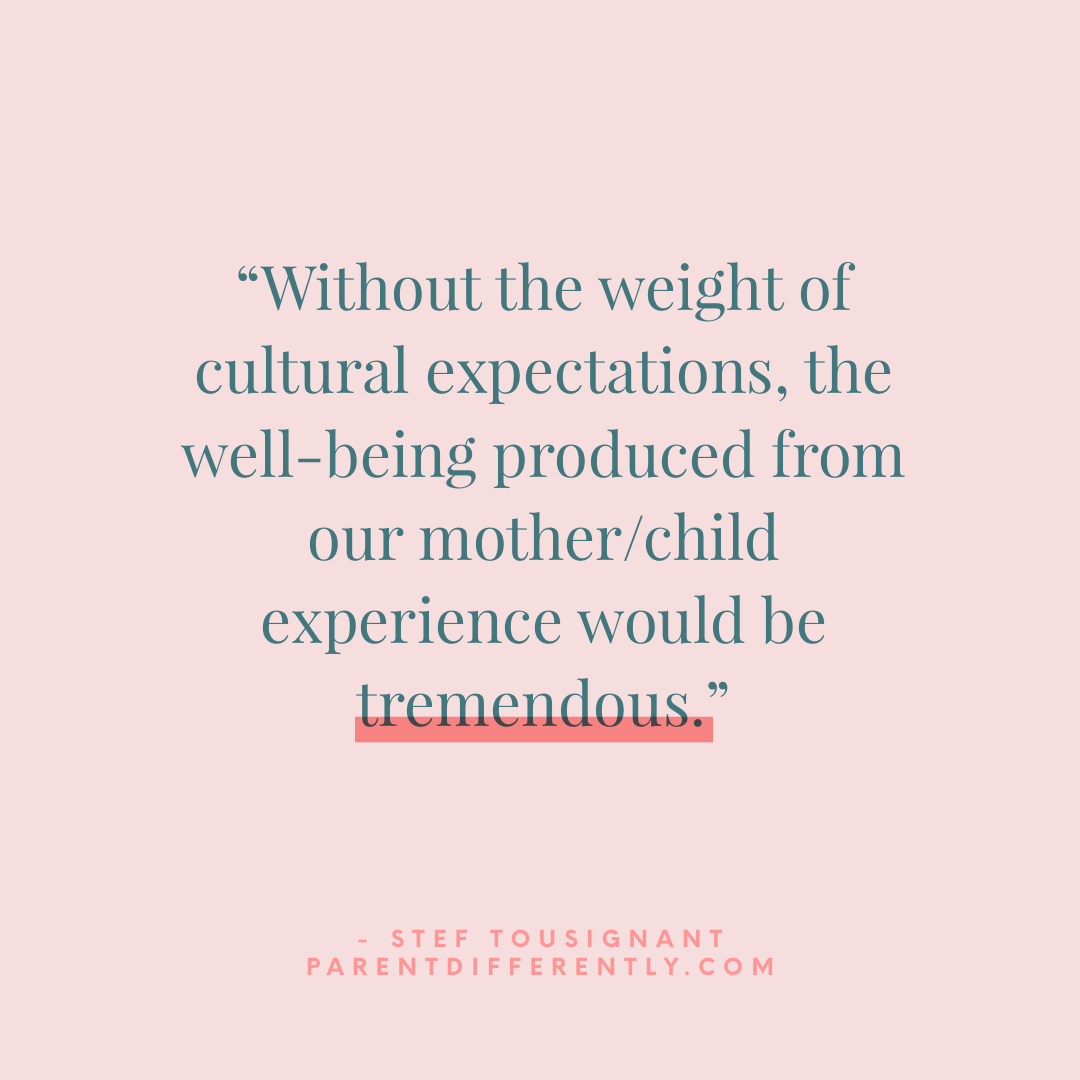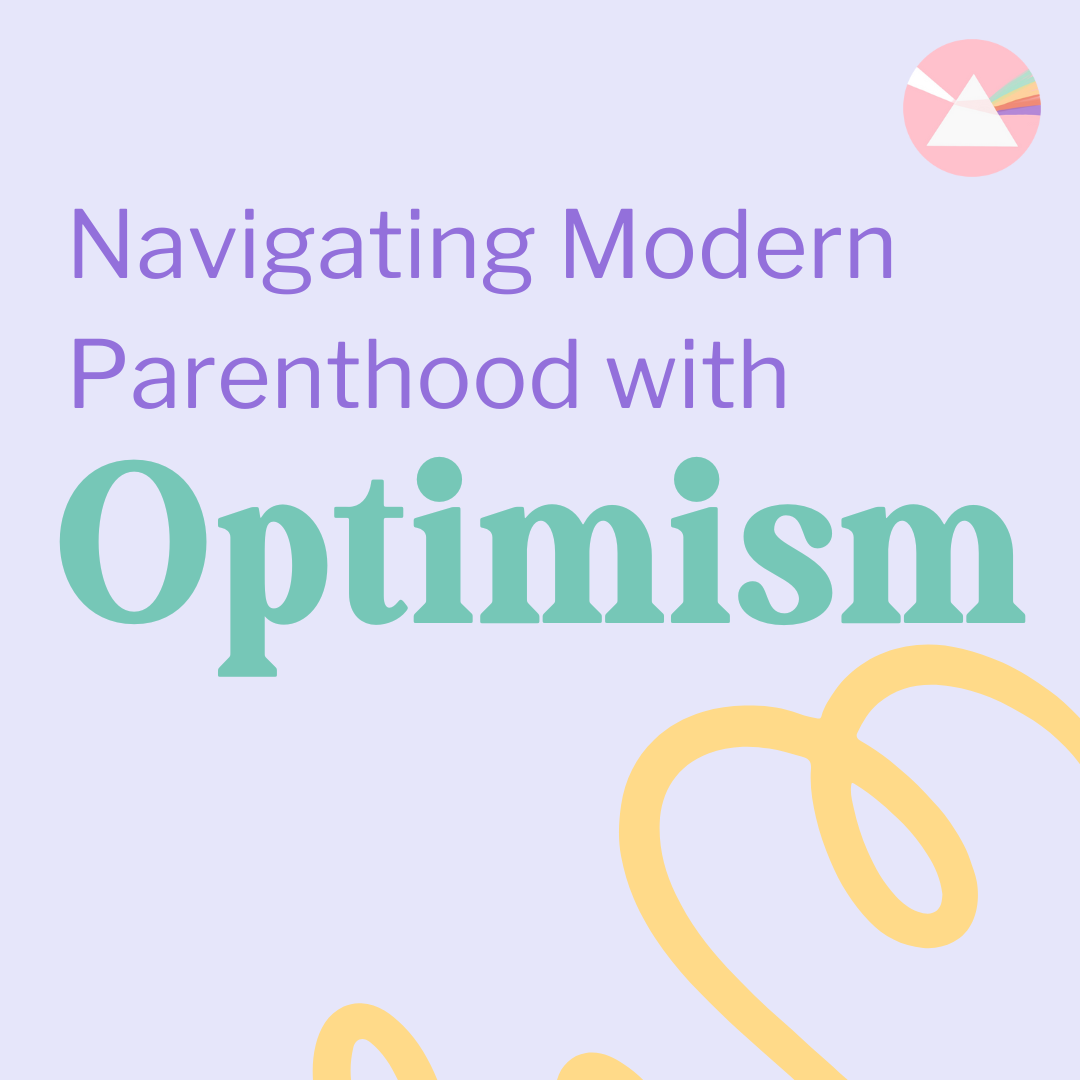The Myth of a Perfect Motherhood
Uncover why modern motherhood can differ from expectations and how shifting societal narratives empower you to raise the next generation.
EMBRACING SELF-GROWTH AND COMMUNITY
Motherhood today is a far cry from the idyllic images painted for us on our Instagram feeds. It's not a serene, monotone journey, but more like a crazy, emotional rollercoaster ride.
We are caught in the highs and lows of paradoxical emotions, battling the ever-looming "mom guilt" and trying to “enjoy every moment.” 🙄 What was once thought of as the epitome of a "good life" has evolved into a stressful mess. Why is this happening!? And how can we make it better?
Let's talk about the realities of modern motherhood, the myth of the maternal instinct, and how embracing self-growth and community could just be our ticket out of this chaos.
THE MYTH OF THE MATERNAL INSTINCT
Once upon a time, motherhood was seen as the ultimate path to happiness for women. It was believed that women possessed a natural maternal instinct that made parenting easy and immensely rewarding. However, today's reality couldn't be further from this ideal. Mothers face a myriad of emotions, from joy and gratitude to sadness and anxiety, all within the first 24 hours of welcoming a new baby into the world. The maternal ideal shatters for most women in those first moments, and they're left to grapple with a range of complex feelings that come up - especially shame.
UNDERSTANDING EMOTIONAL COMPLEXITY
Life is a tapestry of emotions, and many of the emotions we experience can be divided into two categories: positive and negative. Negative emotions like shame, anger, and fear prompt specific survival focused responses, limiting our thoughts and actions to mainly flight, fight or freeze. On the other hand, positive emotions like joy, gratitude, and awe don't trigger immediate action; instead, they broaden our perspective, opening us up to new ideas, concepts, and resources. This phenomenon is known as the "broaden-and-build theory of positive emotions" and was developed by Barbara Fredrickson in 1998.
SO, WHY DO THE FIRST DAYS OF MOTHERHOOD OFTEN FALL SHORT OF EXPECTATIONS?
The answer lies in the clash between personal experience and cultural norms. The cultural narrative of motherhood emphasizes its meaning and importance, but it also sets unattainable standards. Without the weight of cultural expectations, the well-being produced from our mother/child experience would be tremendous. Satisfaction and well-being are subjective, or shaped by individual perspectives, but when our experiences deviate from societal norms, our satisfaction can take a hit.
THE PURSUIT OF THE "GOOD LIFE"
The definition of a "good life" is a subject of debate among researchers and philosophers. Christopher Peterson (2006) argued that the most desirable state involves eudemonic harmony, or a balance between meaning, purpose, growth, and expansion. This balance can be achieved through self-actualization, self-reflection, and the discovery of positive character traits. And once we learn these skills, we aren't selfish; we use them to serve the greater community.
THE CHANGING FACE OF COMMUNITY
However, there's a notable difference between today's communities and those of previous generations: individualism. In the past, when the term "parent" primarily referred to mothers, there was a sense of community support. Neighbors, bus drivers, and extended families all looked out for children. Mothers had a robust network of help. But the rise of individualism has brought both freedom from gender-confining roles AND an increase in loneliness and depression rates (read more about that in Generations by Jean Twenge).
Maternal depression rates have risen, with one in ten children experiencing a depressed mother (Ertel, Rich-Edwards, & Koenen, 2011). A recent Pew Research poll found that 66% of mothers felt that parenting was "a lot harder" than they had anticipated. These factors, coupled other influences, have led to the lowest birth rate in US history.
(Read more about building community through simple gratitude events here.)
THE MYTH OF PARENTING PERFECTION
The message that parenting is "worth it" creates confusion when it doesn’t match reality, and it contributes to the perception that parenting is much harder than expected. By portraying the complete emotional landscape of parenting, we can acknowledge that “meaning” is derived not only from positive experiences but also from the negative ones. It was Peterson who points out that negative experiences act as signals, showing us the areas that need attention: "I'm angry when my kids don't listen because I feel unseen." But positive experiences motivate growth: "Hugging my kids after work calms me and provides the attention I need."
A GOOD LIFE ISN'T ALL GOOD
A good life doesn't have to be all good and there are certainly bad days. In fact, enriching experiences often stem from overcoming challenges. It's the negative experiences, just as much as the positive ones, that make parenting a source of well-being and life satisfaction. They inspire growth and self-reflection. With a shift towards more inclusive messaging and improved social support, future parents can step into the delivery room with a set of expectations that align with the realities they'll face. It's a journey filled with both ups and downs, guided by the compass of self-growth and supported by a caring community.
WHAT NOW?
The pursuit of a "good life" is a deeply personal journey. By acknowledging the diverse emotions that parenting can surface and shifting our societal narrative to one of inclusivity and support, we can navigate the challenges and joys of raising the next generation. It's time to embrace the full spectrum of parenting experiences, recognizing that a "good life" can be derived from both the positive and negative moments. In doing so, we can create a world we feel empowered to grow, learn, and thrive as we navigate the rewarding adventure of raising children.
- And don’t ever forget along that journey, you are a GoodAF Mom. - Stef
What to read next…
Gratitude Practice: Community Gratitude Events
Discover how gratitude can revive unstructured play, reduce stress, and create safer, closer-knit communities for your kids.
Becoming a mother is a wild and life-altering experience. As moms, we navigate a whirlwind of emotions, from the overwhelming love for our little ones to the persistent worries about their safety and well-being. One thing we all want is for our children to grow up happy, healthy, and well-adjusted. But as the world changes around us, the way our children play and develop has evolved, often in ways that give us cause for concern.
The Decline of Unstructured Play
Unstructured playtime, where children use their imaginations and creativity to explore the world around them, has been on the decline in recent years (down by 50% in the last half decade!). Factors like fears, anxieties, and societal changes have led to the significant decrease and it has had a negative impact on our children's well-being.
Attachment theory, established by John Bowlby and Harry Harlow in the 1950s, emphasizes the basic needs for safety and exploration for children. It highlights that kids need to feel secure to play and explore the world. Now, to dig a bit deeper into what happened to play…the decline of unstructured play started before the current youth mental health crisis, during the '80s and '90s when kidnapping scares were widely publicized. Access to green spaces and varying crime levels across different socioeconomic groups further contributed to the decline.
As concerns for our children's safety have grown, parents from various economic backgrounds have responded differently. Some have enrolled their children in structured after-school programs, while others have chosen to keep them indoors (often relying on screen-time).
A Holistic Solution through Gratitude
I believe there's a simple solution to this, and it begins with sharing our thankfulness within our community. Practicing gratitude can have a big impact, like reducing our stress as parents, helping our kids become more independent and happier, and creating a safer and more trustworthy neighborhood for everyone.
History has shown that strong communities have a profound impact on individuals. Early research by Emile Durkheim revealed that individuals living alone or in less tight-knit communities had higher suicide rates. Recent studies, such as the work of James H. Fowler and Nicholas A. Christakis, have shown that when we're part of close-knit communities, we tend to be happier and have more vibrant social networks.
The Practice: Community Gratitude Events
Gratitude events that honor support people in our lives like librarians, crossing guards, and bus drivers remind us of how good our community already is. Gratitude can unite a community around a shared purpose, which can extend to advocating for systemic improvements, such as more green spaces and safe places for kids’ independent play.
When we all express gratitude together, it spreads a cultural message of kindness, understanding, and belonging. This makes kids feel safe and more supported by their community and helps them connect with their neighbors, which, in turn, builds the emotional strength they need for playing on their own.
The "Find, Bind, and Remind" Cycle
The cycle of "find, bind, and remind" promoted by gratitude also allows children to discover positive qualities in their playmates (finding), develop empathy (binding), and encourages them to spend more time together (reminding). Kids in the neighborhood form strong bonds, and that brings families closer as parents get to know each other through their children.
We all face safety issues and laws that make it challenging to give our children the freedom to explore as we once had. But collective bonding within a community is essential for enabling independent play to thrive. And while a neighborhood BBQ can serve as a community reminder, gratitude serves as a community binder. After all, when you know your neighbors are kind, caring and generous people, trust is built, and you are more likely to let your kids play on the sidewalk or walk to school or ride their bikes.
Give it a try
Give a gratitude event a try in your neighborhood and share your experiences with me! It can be as easy as hosting a little get-together in your garage, signing thank-you cards, and swapping stories while the kids draw with sidewalk chalk. It just amazing how by organizing a simple gratitude event that celebrate how connected our communities are, we can encourage independent play, too! Gratitude helps us build strong connections, no matter our background. So, embrace gratitude and strengthen your community bonds and you can ensure your kids grow up in a loving connected environment filled with independent play.
As moms we have the power to make a positive change in our communities and our kids' future. And despite what we have heard, it's not all bad out there! We can foster gratitude and work together to make sure our kids grow up in a world that treasures unstructured play, exploration, and the joy of making connections with others. And don’t you ever forget - you are a GoodAF Mom. - Stef





























